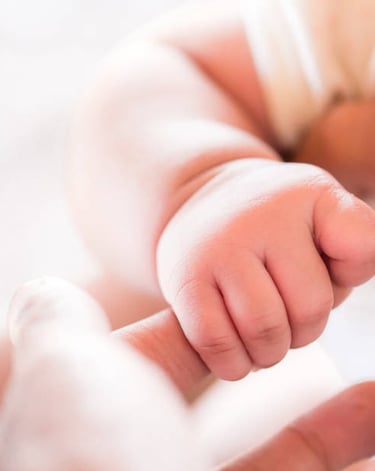Attachment from Early Childhood
Attachment is a fundamental bond that is established between a child and his or her care figures, such as the mother, father or caregiver. During the first years of life, this emotional and behavioral bond is crucial for the child's psychological and emotional development. We will explore the importance of attachment, the existing types and how a good attachment relationship in early childhood influences the formation of attachment figures in the future.
Kids Up
3/4/20242 min read


Attachment is a fundamental bond that is established between a child and his or her care figures, such as the mother, father or caregiver. During the first years of life, this emotional and behavioral bond is crucial for the child's psychological and emotional development. We will explore the importance of attachment, the existing types and how a good attachment relationship in early childhood influences the formation of attachment figures in the future.
What is Attachment?
Attachment is the most relevant emotional and behavioral bond in early childhood. It is established during the first months of life and creates an internal representation of emotional relationships. This representation influences how the child relates to the world and guides her behavior towards others. It is a dynamic process that changes over time according to lived experiences.
Importance of Attachment in Childhood
1. Universal and Primary Need:
- Attachment is as essential as basic biological needs (eating, sleeping, etc.).
- A child needs to feel emotionally connected to develop feelings of affection, care and protection.
2. Security and Self-esteem:
- Attachment provides security and confidence to the child.
-Strengthens her self-esteem and promotes progressive autonomy.
3. World Exploration:
- From a secure base of attachment, the child ventures out to explore the physical and social world.
- Attachment allows us to face the environment effectively.
Types of Attachment
1. Secure Attachment:
- The attachment figure (usually mother or father) responds appropriately to the child's emotional signals.
- The child feels loved, accepted and valued.
-In adulthood, he has healthy relationships and trusts others.
2. Anxious-Ambivalent Attachment:
- Lack of trust in caregivers.
- The child feels insecure and explores the environment in a tense manner.
-In adulthood, he can develop dependent relationships.
3. Avoidant Attachment:
-The child assumes that he cannot count on her caregivers.
-He feels unloved and undervalued.
- Difficulties in relationships in adulthood.
4. Disorganized Attachment:
- Contradictory and inappropriate behaviors.
- Problematic and explosive relationships in adulthood.
Impact on the Future
A secure attachment lays the foundation for healthy relationships and a well-adjusted personality. As future attachment figures, we must be attentive to the needs of children, provide them with affection and create a safe environment.
In our country, the América por la Infancia Foundation and the researcher and psychologist Esteban Gómez, together with other Chilean researchers, have provided instruments, studies and training on attachment and its relevance for child well-being. 🤝🌟
